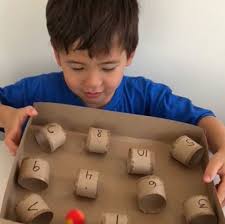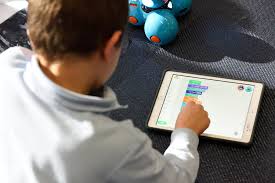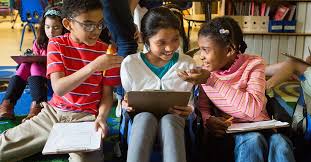How can kids learn Spanish fun?
More Tips for Teaching Spanish to Kids
- Speak it at Home. If you can, learn how to speak Spanish yourself!
- Watch Spanish Cartoons.
- Use Labels.
- Find Native Speakers.
- Emphasize Culture.
- Try Classic Flashcards.
- Sing Spanish Songs.
- Watch Movies with Subtitles.
What games do Spanish children play?
8 Terrific Traditional Hispanic Games
- Lotería. One of the favorite traditional Hispanic games for both kids and adults, Lotería is the Latin American equivalent of BINGO.
- Mar y tierra.
- Chiviri cuarta.
- Sardina.
- El repollo.
- Veo veo.
- A pares y nones.
- Pato, pato, ¡ganso!
How do you make Spanish classes fun?
7 Tips for Teaching Exciting Spanish Classes That Totally Break the Mold
- Vary Your Activities.
- Let Students Express Themselves.
- Get Everyone Involved.
- Mix Up Groups.
- Have Fun with Teaching.
- Teach Something “Just Because!”
- Keep an Eye Out.
What is the best way for a child to learn Spanish?
10 Tips for Helping your Child Learn Spanish
- Start young if you can!
- Read in Spanish.
- Try Spanish apps.
- Hang out with Spanish speakers.
- Try a Spanish speaking babysitter.
- Take Spanish classes.
- Use flashcards.
- Music!
How can kids learn Spanish fun? – Additional Questions
How do I teach my 7 year old Spanish?
Here are some great, fun methods for teaching Spanish.
- Speak Spanish At Home.
- Learn Together.
- Explore YouTube.
- Try Language Teaching Apps.
- Watch Cartoons In Spanish.
- Play Learning Games.
- Use Labels.
- Seek Out Native Speakers.
What is the best Spanish program for kids?
Best Online Spanish Classes for Kids of 2022
- Best Overall: Homeschool Spanish Academy.
- Best for Preschoolers: The Cultured Kid.
- Best for Elementary Students: Kids Club Spanish School.
- Best for Middleschoolers: My Lingo Kids.
- Best for Teens: BaseLang.
- Best on a Budget: Duolingo.
- Best Value: italki.
How can kids learn Spanish for free?
What is the Best Spanish Website? 5 Fantastic and Free Spanish Websites for Kids
- OnlineFreeSpanish. OnlineFreeSpanish is one of our personal favorites for learning Spanish for kids.
- ABCYA. ABCYA teaches elementary school students a multitude of subjects.
- Digital Dialects.
- PBS.
When should I teach my child Spanish?
Start as early as possible
While there is no minimum age for you to teach kids’ Spanish, the first steps in learning are best taken early. It is a good idea to start when your child has learned to speak their native language fluently, which is usually not earlier than at 3 years old.
Which is better Rosetta Stone or Babbel?
Which is better, Babbel or Rosetta Stone? After a thorough review of the language learning courses from both Babbel and Rosetta Stone, we have to give the edge to Babbel as the better language program (albeit a narrow victory).
At what age should a child learn another language?
They concluded that the ability to learn a new language, at least grammatically, is strongest until the age of 18 after which there is a precipitous decline. To become completely fluent, however, learning should start before the age of 10.
What is the hardest language to learn?
1. Mandarin Chinese. Interestingly, the hardest language to learn is also the most widely spoken native language in the world. Mandarin Chinese is challenging for a number of reasons.
What’s the easiest language to learn?
15 of the easiest languages to learn for English speakers – ranked
- Frisian. Frisian is thought to be one of the languages most closely related to English, and therefore also the easiest for English-speakers to pick up.
- Dutch.
- Norwegian.
- Spanish.
- Portuguese.
- Italian.
- French.
- Swedish.
What age is it easiest to learn a language?
the “best age” to learn a new language, according to science
However, according to an earlier study, the window of time when language learning comes naturally may begin to close as early as 5-7 years of age.
Is 25 too old to learn a language?
And while it’s never too late to begin learning a language, it’s never too early, either. The earlier children emerge as bilinguals, the more years they have to benefit from the many blessings that being bilingual confers.
Can you learn a language at 40?
Collectively, this body of research suggests that one can never be too old to learn something new, but that the older they are, the harder it is for them to do so. This is because neuroplasticity generally decreases as a person gets older, meaning the brain becomes less able to change itself in response to experiences.
Can a child learn 2 languages at once?
Many children grow up learning two languages at the same time. Use only one language at home. Your child can learn the second language when he starts school. Give your child many chances to hear and practice both languages during the day.
How many languages is too many for a child?
The rule of thumb is that about 30% of a child’s waking hours needs to be spent in a language to obtain conversational fluency, so, realistically, you’re looking at a max of three languages. Once you have those three languages at a decent level, it would make sense to add another one.
What is the best language for a child to learn?
What is the best language for children to learn?
- French. This charming Latin language is widely spoken around the world.
- Mandarin (Standard Chinese) Up to 800 million people speak Chinese Mandarin across the planet, which makes this language the most spoken in the world.
- Spanish.
- German.
Do bilingual kids speak late?
Bilingual children may say their first words slightly later than monolingual children, but still within the normal age range (between 8-15 months) (11).
Are bilingual brains smarter?
Despite numerous social, employment, and lifestyle benefits, speaking more than one language does not improve your general mental ability, according to a new study conducted by Western’s Brain and Mind Institute.
What are the stages of bilingual?
The five stages of second language acquisition
- Silent or receptive phase. In this first stage, second language learners dedicate time to learning vocabulary of the new language.
- Early production.
- Speech emergence or production.
- Intermediate fluency.
- Continued language development or fluency.




